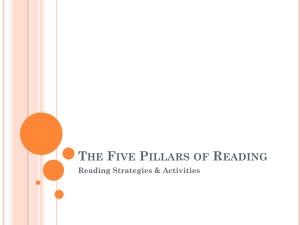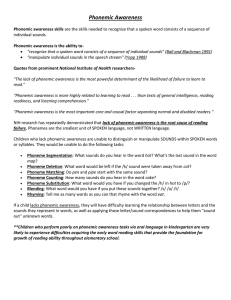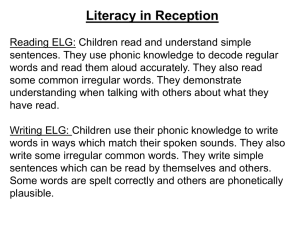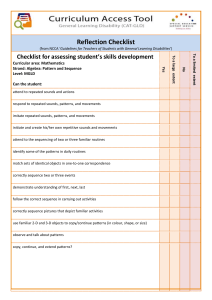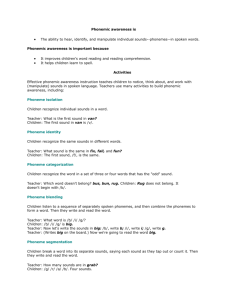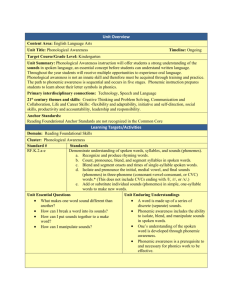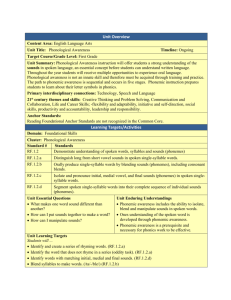Literacy Glossary
advertisement
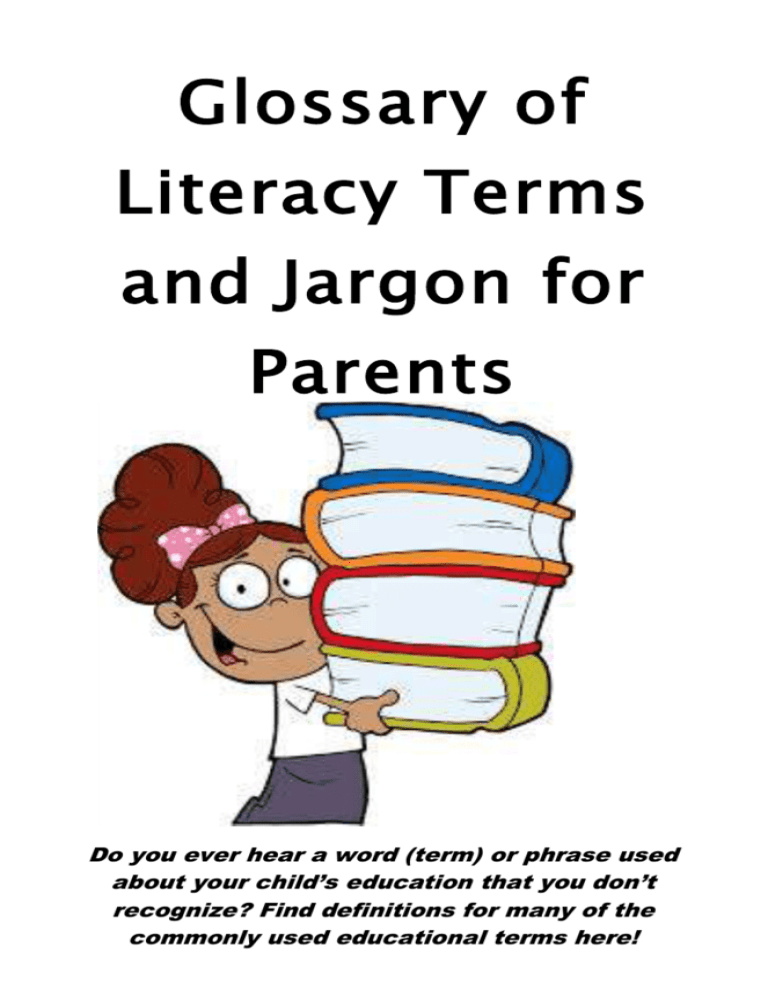
Glossary of Literacy Terms and Jargon for Parents Do you ever hear a word (term) or phrase used about your child’s education that you don’t recognize? Find definitions for many of the commonly used educational terms here! Literacy Terminology (Literacy- The ability to read and write.) Affix – A prefix or suffix of a word. Alliteration – Repetition of an initial phoneme (See Phoneme). Alphabetic Principle – The idea that all letters have a sound, and letters/sounds can be put together to make a word. Blending or Phonemic Blending – Putting parts/sounds of a spoken word together to make a whole word. Comprehension – Being able to understand the meaning of written or spoken words. Concepts of Print – The ideas about how books, print, and words are used (i.e. reading from left to right, differences between letters and words, and the parts of the book, etc.). Decode – The ability to sound out letters and words. Developmental or Invented Spelling – The spelling that occurs when children use their knowledge of letters and sounds to write (i.e. “I kn rd” for “I can read.”). Early Reader – A child that can read and sound out words and extracts meaning from the things that they read. Emergent Reader – A child that is beginning to learn to read (Knows letters and can match them with the sounds that they make.). Environmental Print – Words/Print found in everyday life (i.e. stop signs, fast food signs, labels on food containers, etc.). Fluent Reader – A child who reads most words and phrases and is able to figure out unfamiliar words. Functional Print – Writing/Print for a specific purpose (i.e. signs, lists, etc.). Letter Knowledge – The ability to identify letters of the alphabet. Letter Recognition – The ability to name a specific letter. Letter-Sound Correspondence – The ability to say or write a letter that matches to a sound. Literacy – The ability to read and write. Onset – The sounds in a word that come before the first vowel (i.e. /br/ in “bring”). Phoneme – The smallest units of sound used to form words (i.e. lea-k (leak) is made up of 3 phonemes). Phonemic Awareness – The recognition that spoken words are made of sounds / The ability to identify the individual sounds in words. Phonemic Segmentation – Separating word into sounds (i.e. “dog” to “d-o-g”). Phonics – The relationship between letters and sounds. Phonological Awareness – Understanding the relationships of sounds in spoken words. 3 Picture Cues – Pictures that are a close match to the words in the story. These pictures help children to read when they are having a difficult time. Primary Language – The first language a child learns to speak. Print Awareness – Understanding the rules of written language (i.e. Letters/Numbers have meanings, words have spaces between them, etc.). Proficiency/Proficient/Proficiently – A child’s or student’s performance as it is compared to certain standards or expectations during testing, assessment, or teacher observation. Retelling – Summarizing the events in a story by a child to help a parent/teacher to determine a child’s understanding of a story or ability to use language. Sight Word – A word that is recognized and read without having to be sounded out. Syllable – The smallest part that a spoken word can be broken into (i.e. “watermelon” has 4 syllables “wa-ter-mel-on”). Vocabulary – A collection or list of words and phrases / The words that a child knows. 4 References National Center for Learning Disabilities, (ND). Glossary of early learning and literacy terms. Retrieved from http://www.ncld.org/learning-disabilityresources/faqs/glossary-early-learning-literacy-terms Reading Rockets, (2000). Reading glossary. Retrieved from http://www.readingrockets.org/teaching/glossary#p Document created by Elia Spencer for the Ibraham Aeronautics Elementary School Parent Resource Room March 2014 5 6



